Siemens USA CEO Barbara Humpton: Integration Is Key To MindSphere's Success
'The thing that is most interesting to me is the fact that we have that product that has pull. We don't have to push anybody. Folks are recognizing the power of the portfolio,' Siemens USA CEO Barbara Humpton tells CRN in an interview about the company's MindSphere IoT platform.
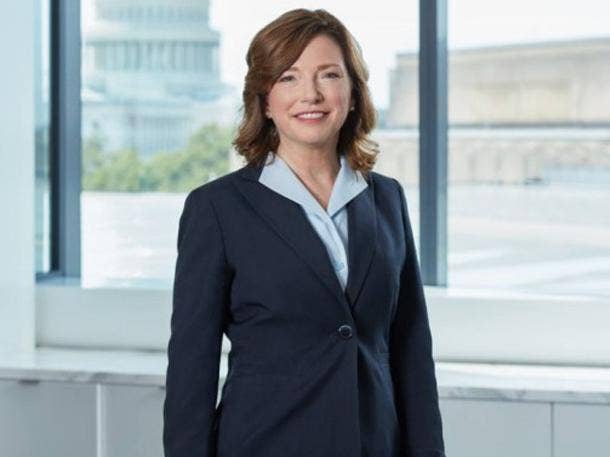
Enabling The Workforce Of The Future
Like its industrial counterparts GE and Hitachi, German engineering giant Siemens has been on its own journey to become a software company with its own industrial Internet of Things platform, MindSphere, on top of other products like its product lifecycle management solutions.
The company most recently acquired low-code development platform Mendix for $730 million — a 2018 transaction that has since resulted in the integration of the platform into MindSphere, lowering the barrier of entry for development of IoT applications.
[Related: GE Digital Layoffs 'Driven By Commercial Demands,' Not Spin-Off Plans]
Barbara Humpton, CEO of Siemens' U.S. subsidiary, believes Mendix will not only play an important role for the future of MindSphere — which she said is on a "phenomenal growth trajectory" — but for the future of Siemens as a whole. A lot of it comes down to enabling the workforce of the future.
"It's going to enable people to join this business who wouldn't have," she said in a recent interview with CRN at the IoT World conference in Santa Clara, Calif.
In the interview, the Siemens USA CEO spoke about the key to MindSphere's success so far in the industrial IoT space, why the company lets customers use competing platforms, how the company works with partners and the larger role IoT plays at Siemens.
What follows is an edited transcript of CRN's interview with Humpton, who also discussed Siemens' transformation as a company, the role businesses and educational institutions should play in developing the workforce of the future and how Siemens is tackling "megatrends" like climate change.

You've been with Siemens since 2011. On a broader level, how has modern technology changed the company?
First of all, what's really cool about Siemens, and one of the reasons I joined is, here's this corporation that is responding to global megatrends. When I joined, I don't know how crisply this was articulated, but you could sense it. In these last few years, that's absolutely what we've become very intentional about. You think about megatrends like urbanization, climate change, the digitalization of everything, and you realize, if you've got know-how in electrification, automation, digitalization, this is what you need to focus on every day.
So Siemens, even in the time I've been here, has been trimming and tailoring its portfolio. When something became what I'll call commoditized, that was time to move that off to the side, let others who are great at commodity products take those on. And then really focus on those areas where it's going to take large-scale engineering talent to go solve the next problem. So you'll find us on the leading edge of so many of these domain areas. Now with software, it brings us into a completely different world.
So this transformation to becoming a tech company began in around 2007 when Siemens made its first big purchase of what would become product lifecycle management and the creation of the digital twin. So since 2007, I mean in the U.S. alone, investment of $40 billion dollars in acquisitions have made us one of the top 10 software companies in the world. Joe Kaeser, who is now our CEO, was actually assigned here in California. He was working in the semiconductor industry, and he started to hear about this trend that was going to happen and made a very wise investment.
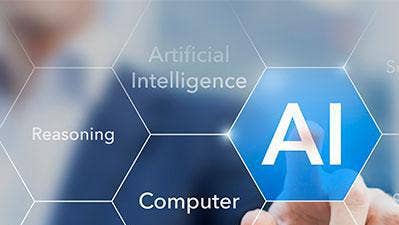
How do IoT and AI fit into Siemens' broader strategy?
In every part of our business, the questions that people are asking are the same. The first layer that happens is when you start to say, "how could I use advanced intelligence in some way?" The first question you ask is, "can I make my gear, my physical, assets more reliable? Can they tell me when they need maintenance?" Well, that's a really easy one to do. So, go drive efficiency in the system. Then the second thing people start to ask is, "oh well, wait a minute, so now that I have this physical asset that can talk to me, what other value can I deliver to end users?" Okay, that brings another layer of this.
What's going to be fun is to see what happens after that when we have a system of systems. What happens when you start sharing data across those systems? Can I get to the point where my transportation system is actually integrated with my building and my life runs more smoothly? I mean, that's just a simple one. But I believe that what we're going to see is a great deal of opportunity arising.
Now when you're Siemens, and your success for 170 years has been bringing physical products into the market, the first question is, "how do you actually make a business out of this?" And step one for Siemens has been partner with customers, co-create. And just having these tools brings us into a totally different kind of relationship with customers. And so that will evolve as well.
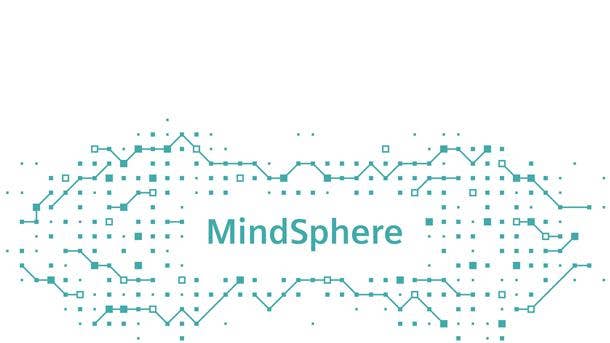
How does Siemens interact with MindSphere? Does the MindSphere team co-develop with Siemens' other business units?
It probably makes sense to have a little bit of context about where we've come from. Think about these areas, these market sectors that Siemens is working in. There's everything in the power [supply] chain, from extraction of fuels to power generation to transmission and distribution, then get into buildings, get into transportation systems, get into industry, etc. And what you're finding is that in every one of those market sectors, people have been tackling this problem for decades.
My favorite story — it came as a surprise to me — was that Siemens connected its first turbine in 1977. Just said, "hey, we're going to have a need to do remote monitoring and be able to be responsive to customers' needs, so using the tools they had back then, over a phone line," and now here we are at this moment where suddenly everything's converging.
So a few years ago Siemens actually put together a team working on a common operational technology operating system, gave it a name, "MindSphere," and the initial effort was very much, you think of the way products are typically developed, where you sort of bring together a core group, you give them a charter, they produce things. And the way we tend to work in Siemens, you'll hear this almost as a concern of the corporation itself: we know that we're rooted in engineering, and so we're often waiting for the final product, ready for deployment, because we deploy technology into infrastructure that's going to be there for decades.
And instead MindSphere is a different kind of animal. It's expected that you go with a minimum viable product, get it into an ecosystem, make improvements as you go. So the team had to be challenged to go ahead, let go, roll it out, and let the businesses start to engage. And so now, every single business of Siemens is interacting with MindSphere along with some other tools that they may have had. If you're in the area around building automation, for instance, you'll hear about Desigo and Navigator, Siemens digital tools that have given people control over their environments. Now integrating that with MindSphere, connecting other systems around buildings is the next stage that we're going to.

In your keynote at IoT World, one of the big topics was how AI and IoT can elevate the role of human workers. That's clearly a big topic in general, and there's been a lot of debate. You seem to have a very optimistic view of what IoT and AI can bring. Why is that?
[During VMWare CIO Bask Iyer's keynote at IoT World], he used that timeline that showed technology and human productivity over the generations. And what we've seen is with every one of our industrial revolutions, we've seen this expansion of wealth. It brought whole communities online and into a thriving economy. So to go from subsistence farming to now being a net exporter of products and services, this is what's happening in society right now. And the fact that digital is going to actually make all of that more productive, it's going to help us discover opportunities that we don't even know exist today, because we're just on the front end of even learning how to ask the questions when you can be informed by actual data out of our operational technology. What would it tell us to do next?
And so my thinking is that yes, we are absolutely in for a rapid transformation, and that may be one of the toughest things about this, but I believe every earlier industrial revolution also felt like it was happening too fast at the time. Every industrial revolution brought displacement, so I think it's going to be important for us as individuals, for us as businesses, for us as communities — you think about what's the role of the individual? What's the role of business? What's the role of government to help really drive a smooth transition and get us all ready for that future?

What are the roles of individuals, businesses and governments in this new industrial revolution?
I think individuals have to, first of all, inform themselves. We did this interesting discussion with deans of engineering from Rutgers and Princeton up near our corporate technology headquarters in Princeton, N.J. And we had a group of people around the room. The topic was, "what are the skills that are going to be most valuable in the workers of the future?" And I was totally expecting, data science and computer science, and we came away from that discussion saying the two most prized skills are going to be curiosity and initiative.
Because the pace of change is accelerating, it's actually going to be vitally important that we get out of this mindset that somebody can go to school, can get prepared for a job, can then earn their right to have a job and enter the workforce and be taken care of for the next 30 years. All the rules are changing. What if a career lasted 50 years now or more? Are we going to be able to teach little children the skills they're going to need throughout their careers? No, absolutely not.
What's fascinating right now is individuals, bring your passion for learning. Businesses, commit to training people on the technologies that you're actually offering, recognize you've got a corporate responsibility to do that. Governments, recognize that this kind of investment is every bit as real as investing in property or R&D. And then academic institutions, get tooled up to be lifelong learning engines. There's been this traditional moment where we've trained the young people of the world. And, yes, academic institutions have become research institutions. All of that still valuable, but there's one missing piece, which is the, how long should we go to school? What if I said forever, right?
Do you think more public-private partnerships are part of that solution?
Maybe, but I actually think private-private-private can work on this too. I think there's a business case to be made. I talked to one university chancellor. We were talking about what the relationship would look like. What if you had a membership in a university? What if you had a subscription? That would really change the game, and it's happening now. What if some universities partnered with businesses? I think that's kind of limiting myself, because we should think about the Internet of Things and what about an Internet of Learning? Everybody, bring your stuff to the table. So what I'm hoping will happen is that academic institutions will start to focus in on, "hey, what's our unique value proposition?" And then begin to share that under new business models.

I wanted to ask about one of those megatrends Siemens is taking on. What role does IoT play in combating climate change? And how has Siemens been specifically tackling that issue?
This is one of the five global megatrends that we built our corporate strategy around. And, in fact, we ourselves made a commitment to be carbon neutral by 2030. One of the first companies to [make that commitment], and certainly the first major industrial to come out with that kind of pledge. And so how does IoT fit into that? Well, it turns out that our built world is responsible for the majority of carbon emissions, right? Think about buildings, power systems, transportation systems. Hey, we are present in all of those.
So now the ability to garner data that can inform us. And I'll give you a very simple example: Enlighted is going to help us understand how buildings are used, and we found two things. One, we have way more space than we need, and therefore in order to handle all that, we're using way more energy than we need. Man, you put these two findings together, you start to use space more efficiently, you're now making much better use of your power.
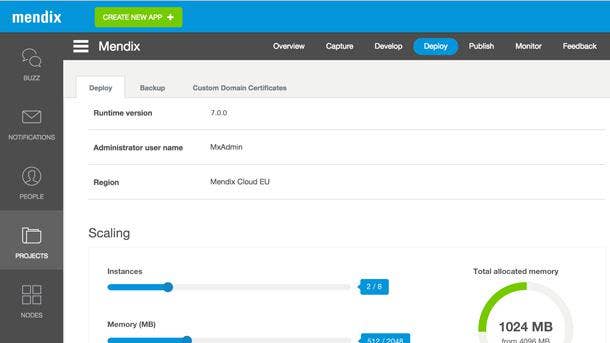
Last year, Siemens acquired low-code development platform Mendix for roughly $730 million. How important is Mendix to MindSphere's future? Or Siemens' future even?
I'm going to say Siemens' future is where my focus is. Because across Siemens, you think about this really complicated physical hardware that we're putting out into the world, and often it comes with user interfaces [where] the expectation is the person who's going to be operating this machinery is an engineer. Well, what if they weren't? What if there weren't enough engineers to operate all of this?
The idea of having a Mendix capability. The idea of being able to take the most complex problems that get solved over and over and over and over again, encapsulate them in code — that's just part of a core product — and then making it so much more intuitive for users who have just really simple operations they need to do. Go reorder operations, go put a new branch into the logic. All of that.
Having the ability of Mendix to make that present in a much more intuitive way is going to be the secret to unlocking our access to the workforce of the future. So, is it important for the MindSphere portfolio? Yes. Also to PLM [product lifecycle management]. So our software that's going into manufacturing environments all around the world, this is going to be a powerful tool. Many were already using it, and their words to us were, "thank heavens, you've got it, and now you're integrating that yourself." So I think it's a differentiator.
My understanding is that Mendix isn't just for industrial applications. They're not completely independent, but it seems like they're still selling into other kinds of customers, too. Does that create an opening for Siemens to expand in ways that the company traditionally wouldn't have thought of?
I think so. I think this is going to spark new thinking. So I'll give you an example. Last week, I was at a major ERP company's annual conference. Mendix was there. It wasn't even branded as Siemens, right? It was branded as Mendix. They've been a longtime partner in the ecosystem around solving businesses' toughest problems. And the more time I spent there, the more of Siemens customers I saw at the event, and I realized, everybody has been coming into these technology companies, saying, "help me solve problem X," and they would go to others saying, "help me solve my finance, my asset management." They'd come to us saying, "help me solve my physical infrastructure," whether it be their power or engineering. And suddenly, there was a customer last week I saw who said, "we're trying to decide on our next automation system for our manufacturing environment," and the key question that they've asked is, "should the base of it be more engineering or financial driven? Which is more important to the success of our business long term?" And I call that Sophie's choice.
That's a horrible decision for business people to have to make today. So then I think that brings it back to us: wouldn't it be cool if we businesses got together and said by collaborating we can go solve a problem that has two faces and maybe even more, right? There's a user experience face, perfection in financials, perfection in engineering. That's not even the whole picture. So I think you're right. Because Mendix is here and has been working with a much broader set of users, we have the potential to get engaged in different kinds of dialogue.

How does Siemens work with partners?
I think in digital, it's much more of an ecosystem than you might see in some other markets and some other lines of work. But in an ecosystem what happens is you are both partnering, you're collaborating, and you're competing against one another from time to time. And so the key question is always, what are our objectives for a particular customer? Well, let's hear from the customer and become more customer-driven. So that's kind of cool that we're entering a phase where our customers are going to speak to us, and they're going to tell us who they want us to partner with. And then think about something like MindSphere that's an open platform. And then you think about all these other technology providers and how they've become more modular, and so we can all configure our solutions in new and different ways. That's really exciting.
For Siemens customers across the different verticals, to what extent are you trying to get them to use MindSphere? I know you also have the Enlighted smart building platform as well.
We have lots of platforms, first of all. So there are going to be some folks who are going to say, "hey, I'm pure play. I've got this building. I'm trying to put a sensor network in." Enlighted is a great solution, and then it's even possible that later the same customer would come back to us and say, "but wait, I've got some other things that need to be integrated." Hey, MindSphere can be a great offer for that. But, I'll blow your mind: it doesn't have to be MindSphere.
What we're doing is we're saying we can integrate with other platforms, period. We've got multiple cloud providers we're showing success with today, so that people can see, "ah, yeah, I see how all this integrates." If you look at it from a Siemens perspective, our know-how is in the physical world around all these technologies we're providing and so adding this digital component to it — it does change the way we work, and I'm happy to report that Siemens has gotten the message about being open, which is the most powerful thing.
So just think about this industrial revolution we're talking about. How many businesses are there across the United States who could take advantage of our manufacturing product lifecycle management software that could help them in the future? And the answer is far more than we could ever serve. So we've been talking a lot about workforce development and saying, "don't leave anyone behind." I've been extending that to the business front: "don't leave any businesses behind." And so if it's a matter of working through associations, working through others who have existing relationships, say with small and medium enterprises, we can leverage those relationships, bring our know-how to the table — maybe we never touch the end customer — but it's an avenue to help those raise their game. And that's going to be good for us at the end of the day too.
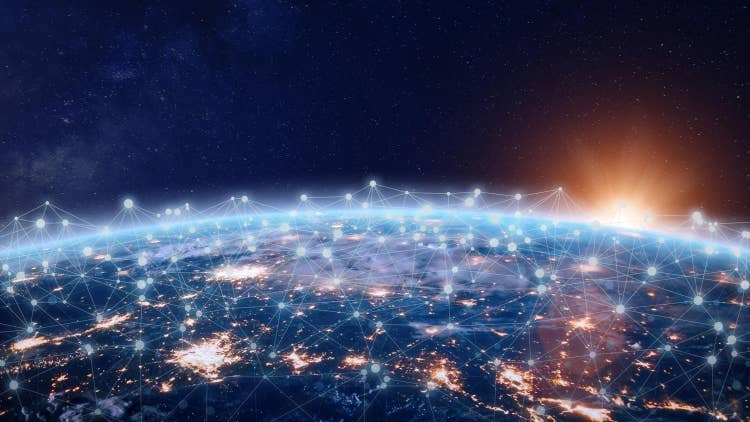
How do you balance helping customers by being open while helping the MindSphere team grow?
First of all, they're on a phenomenal growth trajectory on their own, and the world of opportunity is so big they can't address it all. We had a meeting with the MindSphere team in Atlanta recently, and the analogy I used is, "folks, there's no reason to be fighting over French fries like seals. Because guess what? There's a French fry vendor down the street." Everybody has plenty of opportunity. So, I think the big thing with the MindSphere team is, for those who are focused on MindSphere, where do they want to go next? Who are the customers they want to reach? Who are the right partners who are going to make them most successful?
I'll tell you one partnership I'm really bullish on right now: the Siemens-Deloitte partnership. So Deloitte, absolutely stellar in consulting around industry. In the manufacturing sector, they know more than any other company I'm aware of. They've done these independent studies on which company has the most comprehensive portfolio that would help a manufacturer achieve their dream of having a full digital twin, etc. it's a very clear answer: Siemens. So the thing that is most interesting to me is the fact that we have that product that has pull. We don't have to push anybody. Folks are recognizing the power of the portfolio. They want to come to us. The question is, can we reach everybody? And the answer is no.
There are a handful of industrial conglomerates pursuing their own IoT software efforts. What is Siemens doing that is making it work right now?
The keyword is integration. We've made a conscious choice not to create a separate digital business, right? Every business is digital. Every customer is going digital. So what we've needed to do is create the center of competence, [where] we need caretakers for the core MindSphere capability. We've actually then housed that in our in our Digital Industries operating company, because they've got the know-how to keep that maturing and evolving. But then that capability is made available to everybody across the corporation. So you feel this tremendous ownership. Every sales team is spending time going through a this idea of a digital readiness check. If everybody in the company can do their own check and say, "hey, am I prepared for what's coming?" Then they can also plan out what they need to do as individuals to up their game. So sales teams, management teams, folks who are going into call on customers, they're all learning the new language, what questions to ask, and how to interact. It's very much integrated.